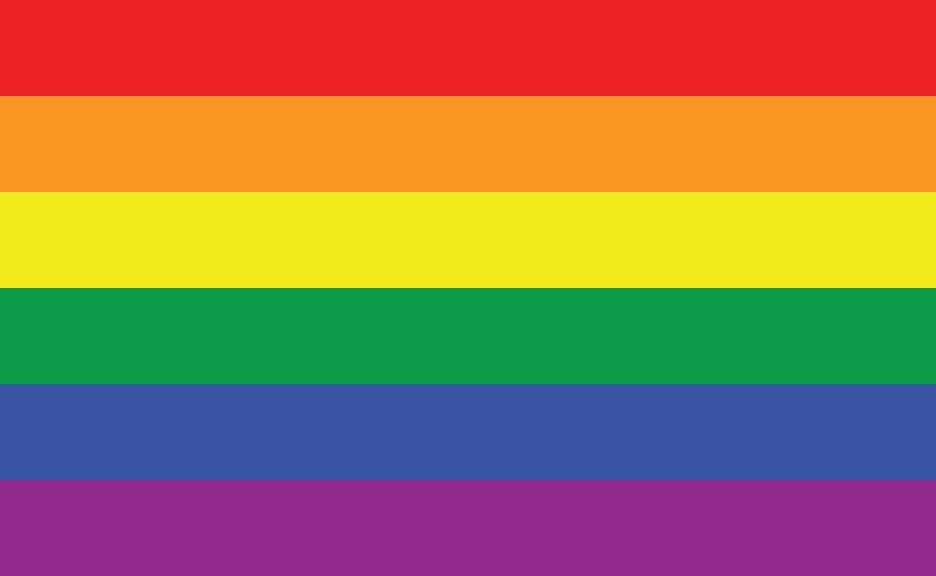Since the unveiling of the original 8-striped Pride flag in 1978, the spectrum of Pride flags has expanded, reflecting the evolving inclusivity of the LGBTQ+ movement. Among these, the six-striped flag has become a prominent symbol. This article explores the array of flags representing various segments of the LGBTQ+ community.
Lesbian Flag and Other Diverse Pride Flags
1. LGBTQ+ Pride Flag (6-Striped Version) Introduced in 1979, the six-color variant of the Pride flag has gained widespread popularity. It evolved from the original Pride flag, conceptualized by Gilbert Baker. In 1974, Baker met influential gay leader Harvey Milk, who challenged him to create a symbol for gay pride. This resulted in the creation of the iconic rainbow flag, a symbol of LGBTQ+ pride and social movements.
2. Original 8-Striped Pride Flag Gilbert Baker’s original 1978 design featured eight stripes, each representing different aspects of life. First displayed at the San Francisco Gay Freedom Day Parade on June 25, 1978, it was hand-dyed and stitched by thirty volunteers. The colors symbolize sex (pink), life (red), healing (orange), sunlight (yellow), nature (green), magic/art (turquoise), serenity (indigo), and spirit (violet).
3. Transgender Pride Flag Created in 1999 by American trans woman Monica Helms, the Transgender Pride Flag first appeared at a Phoenix pride parade in 2000. Its design includes light blue (traditional color for baby boys), pink (traditional color for baby girls), and white (representing intersex, transitioning, or undefined gender individuals).
4. Bisexual Pride Flag Designed in 1998 by Michael Page, this flag aims to increase bisexual visibility within the larger LGBT community. It serves as a symbol for the bisexual community, paralleling the gay pride flag.
5. Lesbian Pride Flag Characterized by shades of pink, orange, white, and red, the Lesbian Pride Flag is widely recognized. An older version, predominantly featuring red and pink, sometimes includes a lipstick mark, representing the Lipstick Lesbian subculture.
6. Polysexual Pride Flag Drawing inspiration from pansexual and bisexual flags, the Polysexual Pride Flag incorporates pink, blue, and green stripes. It represents the attraction towards various genders, including third gender, two-spirit, genderqueer, and intersex individuals.
7. Asexual Pride Flag The Asexual Pride Flag, with its black, grey, white, and purple stripes, symbolizes asexuality, the grey area between sexual and asexual, sexuality, and community, respectively.
8. Demisexual Pride Flag Created to represent those who experience sexual attraction only with an emotional bond, the Demisexual Pride Flag was introduced by The Demisexuality Resource Center.
9. Pansexual Pride Flag Symbolizing romantic attraction across different genders and sexualities, the Pansexual Pride Flag has been visible online since around 2010.
10. Philly Pride Flag Introduced in 2017 in Philadelphia, this flag, with added black and brown stripes, emphasizes the inclusion of black and indigenous people of color in the queer community. The design sparked debate but highlighted the racial prejudices present in society.
11. Intersex Pride Flag Launched in 2013 by Intersex Human Rights Australia, the Intersex flag features an unbroken, unornamented circle on a yellow background, symbolizing wholeness, completeness, and the fight for bodily autonomy and genital integrity.
12. QPOC Pride Flag Gaining prominence in 2020, the QPOC Pride Flag represents the intertwined histories of the black and queer communities. It features a raised fist and various shades of brown and white, symbolizing solidarity and the human rainbow.
13. Genderqueer Pride Flag Designed in 2011 by Marilyn Roxie, the Genderqueer flag includes lavender (androgyny/queerness), white (agender identity), and green (non-binary identities).
14. Progress Pride Flag Introduced in 2018 by Daniel Quasar, this flag adds a chevron with black, brown, white, pink, and blue stripes to the traditional rainbow flag, enhancing inclusivity.
15. Nonbinary Pride Flag Designed in 2014 by Kye Rowan, the Nonbinary Pride Flag features yellow (gender outside the binary), white (many or all genders), purple (mix of female and male), and black (without gender) stripes.
16. Bear Pride Flag Craig Byrnes’s 1995 design for the International Bear Brotherhood Flag includes colors representing the furs of animal bears, symbolizing the bear subculture in the LGBT community.
17. Straight Ally Pride Flag Representing straight allies who support LGBTQA+ rights and fight against discrimination, this flag, with its black and white stripes and rainbow chevron, symbolizes unity and support.
Each flag in this diverse spectrum holds unique significance, representing the richness and diversity of the LGBTQ+ community.
